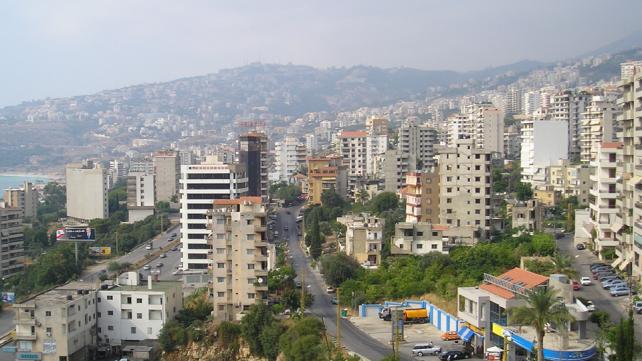
Lebanon is one of the most densely populated countries in the Mediterranean area. It has one of the highest rates of literacy.
Almost 70 percent of its 4.1 million people are Muslim.
BASIC STATISTICS
• The country has a population of 3,562,699 (July 1999 est.)
• Currency: 1 Lebanese pound (?L) = 100 piasters
• Nationality:
• noun: Lebanese (singular and plural)
• adjective: Lebanese
• Ethnic groups:
•Arab 95%, Armenian 4%, other 1%
• Religions
• Islam 70% (the country has 5 legally recognized groups it considers Muslim.
• Christian 30% (11 legally recognized Christian groups–4 Orthodox Christian, 6 Catholic, 1 Protestant)
• Among the Christians, Maronites form the largest group, and Greek Orthodox and Greek Catholics are the next largest groups.
Languages
• Arabic (which is the official language)
• French, English, Armenian are widely understood
Literacy (age 15 and over can read and write)
• total population: 86.4%
male: 90.8%
female: 82.2% (1997 est.)
Flag description
• three horizontal bands of red (top), white (double width), and red with a green and brown cedar tree centered in the white band
Geography
• Lebanon borders the Mediterranean Sea, between Israel and Syria in the Middle East
• It is about 0.7 times the size of Connecticut
• Lebanon is the home of Nahr al Litani, the only major river in the Near East not crossing an international boundary;
• the country's rugged terrain historically helped isolate, protect, and develop numerous factional groups based on religion, clan, and ethnicity
Natural Resources
• its natural resources are limestone, iron ore, salt. Interestingly, it is a water-surplus state in a water-deficit region
Economics
• GNP per capita: 3350 US$
• GNP: 13.9 billion US$
• GDP: purchasing power parity–$15.8 billion (1998 est.)
• GDP–real growth rate: 3% (1998 est.)
• GDP–per capita: purchasing power parity–$4,500 (1998 est.)
• A civil war between 1975 and 1991 seriously damaged Lebanon's economic infrastructure, cut national output by half, and all but ended Lebanon's position as a Middle Eastern entrepot and banking hub. Peace has enabled the central government to restore control in Beirut, begin collecting taxes, and regain access to key port and government facilities.
• Lebanon's economy has made impressive gains since the launch of "Horizon 2000," the government's $20 billion reconstruction program in 1993.
• Real GDP grew 8% in 1994 and 7% in 1995 before Israel's Operation Grapes of Wrath in April 1996 stunted economic activity.
• Solidere, a $2-billion firm, is managing the reconstruction of Beirut's central business district; the stock market reopened in January 1996; and international banks and insurance companies are returning.
• The government has had to fund reconstruction by tapping foreign exchange reserves and boosting borrowing.
• the gap between rich and poor has widened in the 1990's
• Labor force: 1 million
note: in addition, there are as many as 1 million foreign workers (1996 est.)
• Labor force–by occupation: services 62%, industry 31%, agriculture 7% (1997 est.)
• Unemployment rate: 18% (1997 est.)
• Budget: Revenues are $4.9 billion and expenditures are $7.9 billion
• Industries are banking; food processing; jewelry; cement; textiles; mineral and chemical products; wood and furniture products; oil refining; metal fabricating
• Agricultural products that Lebanon produces are: citrus, grapes, tomatoes, apples, vegetables, potatoes, olives, tobacco, hemp (hashish); sheep, goats
• Exports: $711 million
• Exports–commodities: foodstuffs and tobacco 20%, textiles 12%, chemicals 11%, metal and metal products 11%, electrical equipment and products 10%, jewelry 10%, paper and paper products 8% (1997)
• Exports–partners: Saudi Arabia 14%, UAE 9%, France 7%, Syria 6%, US 6%, Kuwait 4%, Jordan 4%, Turkey 4%
• Imports: $7.5 billion
• Imports–commodities: foodstuffs 29%, machinery and transport equipment 28%, consumer goods 18%, chemicals 9%, textiles 5%, metals 5%, fuels 3%, agricultural foods 3% (1997)
• Imports–partners: Italy 13%, US 9%, France 9%, Germany 8%, Switzerland 7%, Japan 4%, UK 4%, Syria 4% (1997)
• Debt–external: $3 billion (1998 est.)
• Economic aid–recipient: $3.5 billion (pledges 1997-2001)
Lebanon's Population
• The age breakdown is the following
0-14 years: 30% (male 535,596; female 515,776)
15-64 years: 64% (male 1,084,121; female 1,196,678)
65 years and over: 6% (male 105,133; female 125,395) (1999 est.)
• Its population growth rate is about 1.61%
• Its birth rate is 22.5 births/1,000 population (1999 est.)
• The death rate is 6.45 deaths/1,000 population (1999 est.)
• The Sex ratio is:
at birth: 1.05 male(s)/female
under 15 years: 1.04 male(s)/female
15-64 years: 0.91 male(s)/female
65 years and over: 0.84 male(s)/female
total population: 0.94 male(s)/female (1999 est.)
• Its infant mortality rate is 30.53 deaths/1,000 live births (1999 est.)
Life expectancy at birth
• total population: 70.93 years
• male: 68.34 years
• female: 73.66 years (1999 est.)
Total fertility rate
• 2.25 children born/woman (1999 est.)
Lebanon's Politics
• Lebanon is a republic, in terms of the type of government it has
• its capital is the city Beirut
• it gained independence on November 22, 1943 from the League of Nations mandate under French administration
• its constitution was adopted on May 23, 1926 and has been amended a number of times
• its legal system is a mixture of Ottoman law, canon law, Napoleonic code, and civil law; no judicial review of legislative acts
• all males are obligated to vote at the age of 21. Women, who are aged 21 and an elementary level of education vote
Lebanon's executive branch
• prime minister and deputy prime minister appointed by the president in consultation with the National Assembly
• by custom, the president is a Maronite Christian, the prime minister is a Sunni Muslim, and the speaker of the legislature is a Shia Muslim
• the chief of state is President Emile Lahud (since 24 November 1998)
• the head of the government is Prime Minister Salim al-HUSS (since 4 December 1998)
• cabinet: Chosen by the prime minister in consultation with the president and members of the National Assembly; the current Cabinet was formed in 1998
• elections: the president is elected by the National Assembly for a six-year term; the last election was held 15 October 1998
Lebanon's legislative branch
• A unicameral National Assembly or Majlis Alnuwab (Arabic) or Assemblee Nationale (French) (128 seats; members elected by popular vote on the basis of sectarian proportional representation to serve four-year terms)
•Elections were last held in the summer of 1996
Lebanon's Judicial branch
• there are four Courts of Cassation (three courts for civil and commercial cases and one court for criminal cases)
• the Constitutional Council rules on the constitutionality of laws
• the Supreme Council hears charges against the president and prime minister as needed
Political parties and leaders
• generally speaking, political party activity is organized along largely sectarian lines. Many political groupings exist, consisting of individual political figures and followers motivated by religious, clan, and economic considerations
Diplomatic representation in the US
• Chief of mission: Ambassador-designate Farid Abboud
chancery: 2560 28th Street NW, Washington, DC 20008
telephone: [1] (202) 939-6300
fax: [1] (202) 939-6324
• there are also consulates general in Detroit, New York, and Los Angeles
Diplomatic representation from the US
• Chief of mission: Ambassador David Satterfield
• Embassy: Antelias, Beirut
mailing address: P. O. Box 70-840,
Beirut; PSC 815, Box 2,
FPO AE 09836-0002
telephone: [961] (1) 402200, 403300, 426183, 417774, 889926
fax: [961] (1) 407112
Lebanon's Military
• Military manpower–availability: males age 15-49: 925,834 (1999 est.)
• Military manpower–fit for military service: males age 15-49: 573,093 (1999 est.)
• Military expenditures–dollar figure: $445 million (1997)
• Military expenditures–percent of GDP: 5% (1997)
International Disputes
• Israeli troops have illegally occupied southern Lebanon since June 1982.
• There are also about 25,000 Syrian troops present in northern, central, and eastern Lebanon since October 1976. Syria's deployment was legitimized by the Arab League during Lebanon's civil war and in the Taif Accord. Syria cites the continued weakness of the LAF, Beirut's requests, and failure of the Lebanese Government to implement all of the constitutional reforms in the Taif Accord, as a reason for refusing to withdraw its troops from Lebanon.
Lebanon's History
• It was the site of some of the oldest human settlements in the world. For example, the Phoenician ports of Tyre, Sidon and Byblos were dominant centers of trade and culture in the 3rd millennium BC.
• Khalifa Abu Bakr (may Allah be pleased with him) (632-34), brought Islam to the area surrounding Lebanon between 632 and 634) . Dividing his forces into three groups, he ordered one to move in the direction of Palestine, one toward Damascus, and one toward the Jordan River. The groups under General Khalid ibn al Walid (may Allah be pleased with him) defeated the forces in 636 at the Battle of Yarmuk in northwestern Jordan.
• After the Battle of Yarmuk, Khalifa Umar appointed Muawiyah, founder of the Umayyad dynasty, as governor of Syria, which included present-day Lebanon.
• Muawiyah garrisoned troops on the Lebanese coast and had the Lebanese shipbuilders help him construct a navy to resist any potential attack from the Byzantines. He also stopped raids by the Marada, a people who had settled in the Lebanese mountains and who were used by the Byzantine rulers to prevent any Muslim invasion that would threaten the Byzantine Empire.
• Muawiyah negotiated an agreement in 667 with Constantine IV, the Byzantine emperor,. Under it, he agreed to pay Constantine an annual tribute in return for the cessation of Marada incursions. During this period some of the Muslim tribes settled in the Lebanese and Syrian coastal areas.
• Under the Abbasids, who followed the rule of the Umayyads, philosophy, literature, and the sciences received great attention. This was particularly the case when Harun ar Rashid was Khalifa and his son, Al Mamun. At this time, Lebanon made an important contribution to this intellectual renaissance. Physician Rashid ad Din, jurist Al Awazi, and the philosopher Qusta ibn Luqa were leaders in their respective disciplines. Lebanon also enjoyed an economic boom in which the Lebanese harbors of Tyre and Tripoli were busy with shipping as the textile, ceramic, and glass industries prospered. Products from Lebanon were sought after not only in Arab countries but also throughout the Mediterranean Basin.
• Generally speaking, as the Muslim rulers were tolerant of Christians and Jews, both of whom paid the Jizya tax and were exempted from military service.
• Later on, Uunder the Ottoman Empire, the practice developed of administering non-Muslim groups as separate communities called millets. In the late-1980s, this system continued; each religious community was organized under its own head and observed its own laws pertaining to matters such as divorce and inheritance.
• During the Crusades between 1095 and 1291, the Crusaders turned their attention to the Lebanese coast after first conquering Jerusalem. Tripoli fell in 1109; Beirut and Sidon, in 1110. Tyre in 1124
• Of all the contacts established by the Crusaders with Middle Easterners, those with the Maronites of Lebanon were among lasted the longest. They acquainted the Maronites with European influences and made them more receptive to friendly approaches from Westerners. During this period the Maronites were brought into a union with the Holy See, a union that survived in the late 1980s.
• France was a major participant in the Crusades. The country's interest in the region and its Christian population dates to this period.
• During the 13th century, the Muslim Mamluks gained control of the area.
• The Mamluks indirectly fostered relations between Europe and the Middle East even after the fall of the Byzantine Empire because the Europeans, who were used to the Middle East's luxury items wanted its raw materials and manufactured products. Middle Easterners, wanted access to the lucrative European market. Due to geography, Beirut became the center of intense trading activity. Despite religious conflicts among the different communities in Lebanon, intellectual life flourished, and economic prosperity continued until Mamluk rule was ended by the Ottoman Turks.
• The Ottomans took control of the area in 1516 until the 1916. The Ottomans, through two Druze feudal families, the Maans and the Shihabs, ruled Lebanon until the middle of the nineteenth century. It was under Ottoman rule that the term Greater Syria was coined to name the approximate area included in present-day Lebanon, Syria, Jordan, and Israel.
• In September 1918 the British general Edmund Allenby and Faysal I, son of Sharif Husayn of Mecca, (a collaborator with the English agent know as Lawrence of Arabia) moved into Palestine with British and Arab forces, thus opening the way for the occupation of Syria and Lebanon. At the San Remo Conference held in Italy in April 1920, the Allies gave France a mandate over Greater Syria. France then appointed General Henri Gouraud to implement the mandate provisions.
• On September 1, 1920, General Gouraud proclaimed the establishment of Greater Lebanon with its present boundaries and with Beirut as its capital.
• Lebanon was not designated a state until 1920. That was when France, which had colonized Lebanon and administered it as a League of Nations mandate, established the state of Greater Lebanon.
• Lebanon became a republic in 1926 and achieved independence in 1943.
• The Lebanese constitution was modeled after the French Third Republic's. It included a unicameral parliament called the Chamber of Deputies, as well as a president, and a Council of Ministers, or cabinet.
The president was to be elected by the Chamber of Deputies for a six-year term and could not be reelected until this period ended. The deputies had to be elected by the people along religious lines. The president was to be a Maronite Christian, the prime minister a Sunni Muslim, and the speaker of the Chamber of Deputies a Shia Muslim.
• Under the Lebanese constitution, the French high commissioner still exercised supreme power.
• Charles Dabbas, a Greek Orthodox Christian, was elected as the first president of Lebanon three days after the adoption of the Constitution.
• At the end of his first term in 1932, Bishara al Khoury and Emile Iddi competed for the presidency. As a result, the Chamber of Deputies was divided. To break the deadlock, some deputies suggested Shaykh Muhammad al Jisr, who was chairman of the Council of Ministers and the Muslim leader of Tripoli, as a compromise candidate. But French high commissioner Henri Ponsot suspended the constitution on May 9, 1932, and extended Dabbas's term for one year. By doing this, he prevented the election of a Muslim as president.
• Lebanon's first president after independence was Bishara al Khoury, elected in 1943 for a six-year term; reelected in 1949 for a second term,
• a devastating civil war took place in the country between 1975 and 1991. The Taif Accord was a blueprint for national reconciliation. Under this accord, the country's sectarian divisions (i.e. Sunni, Shia, Christian Maronite, etc.) have been institutionalized in the government (see section on government above for which religious groups get to hold which positions).![]()


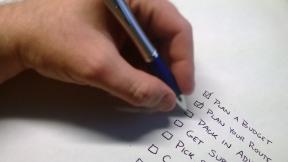
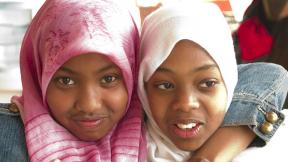
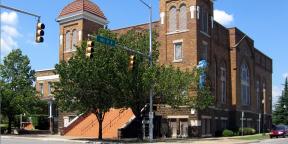
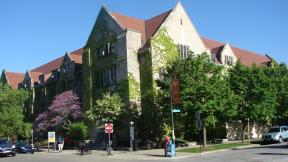


Add new comment